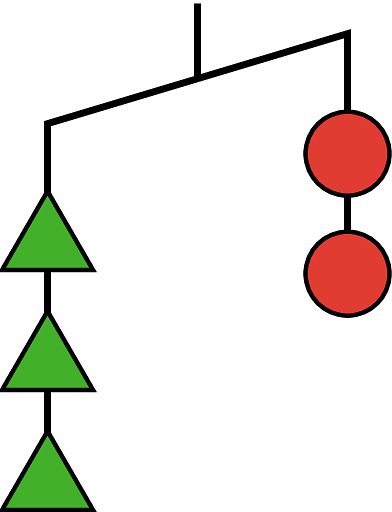Lesson 16Interpreting Inequalities
Let’s write inequalities.
Learning Targets:
- I can match an inequality to a situation it represents, solve it, and then explain what the solution means in the situation.
- If I have a situation and an inequality that represents it, I can explain what the parts of the inequality mean in the situation.
16.1 Solve Some Inequalities!
For each inequality, find the value or values of that make it true.
16.2 Club Activities Matching
Choose the inequality that best matches each given situation. Explain your reasoning.
- The Garden Club is planting fruit trees in their school’s garden. There is one large tree that needs 5 pounds of fertilizer. The rest are newly planted trees that need pound fertilizer each.
- The Chemistry Club is experimenting with different mixtures of water with a certain chemical (sodium polyacrylate) to make fake snow.
To make each mixture, the students start with some amount of water, and then add of that amount of the chemical, and then 9 more grams of the chemical. The chemical is expensive, so there can’t be more than a certain number of grams of the chemical in any one mixture. - The Hiking Club is on a hike down a cliff. They begin at an elevation of 12 feet and descend at the rate of 3 feet per minute.
- The Science Club is researching boiling points. They learn that at high altitudes, water boils at lower temperatures. At sea level, water boils at . With each increase of 500 feet in elevation, the boiling point of water is lowered by about .
16.3 Club Activities Display
Your teacher will assign your group one of the situations from the last task. Create a visual display about your situation. In your display:
- Explain what the variable and each part of the inequality represent
- Write a question that can be answered by the solution to the inequality
- Show how you solved the inequality
- Explain what the solution means in terms of the situation
Are you ready for more?
is a set of four consecutive integers whose sum is 18.
- How many sets of three consecutive integers are there whose sum is between 51 and 60? Can you be sure you’ve found them all? Explain or show your reasoning.
- How many sets of four consecutive integers are there whose sum is between 59 and 82? Can you be sure you’ve found them all? Explain or show your reasoning.
Lesson 16 Summary
We can represent and solve many real-world problems with inequalities. Writing the inequalities is very similar to writing equations to represent a situation. The expressions that make up the inequalities are the same as the ones we have seen in earlier lessons for equations. For inequalities, we also have to think about how expressions compare to each other, which one is bigger, and which one is smaller. Can they also be equal?
For example, a school fundraiser has a minimum target of $500. Faculty have donated $100 and there are 12 student clubs that are participating with different activities. How much money should each club raise to meet the fundraising goal? If is the amount of money that each club raises, then the solution to is the minimum amount each club has to raise to meet the goal. It is more realistic, though, to use the inequality since the more money we raise, the more successful the fundraiser will be. There are many solutions because there are many different amounts of money the clubs could raise that would get us above our minimum goal of $500.
Lesson 16 Practice Problems
Priya looks at the inequality and says “I subtract a number from 12 and want a result that is bigger than 5. That means that the solutions should be values of that are smaller than something.”
Do you agree with Priya? Explain your reasoning and include solutions to the inequality in your explanation.
When a store had sold of the shirts that were on display, they brought out another 30 from the stockroom. The store likes to keep at least 150 shirts on display. The manager wrote the inequality to describe the situation.
- Explain what means in the inequality.
- Solve the inequality.
- Explain what the solution means in the situation.
You know is a number less than 4. Select all the inequalities that must be true.
Here is an unbalanced hanger.

- If you knew each circle weighed 6 grams, what would that tell you about the weight of each triangle? Explain your reasoning.
- If you knew each triangle weighed 3 grams, what would that tell you about the weight of each circle? Explain your reasoning.
At a skateboard shop:
- The price tag on a shirt says $12.58. Sales tax is 7.5% of the price. How much will you pay for the shirt?
- The store buys a helmet for $19.00 and sells it for $31.50. What percentage was the markup?
- The shop pays workers $14.25 per hour plus 5.5% commission. If someone works 18 hours and sells $250 worth of merchandise, what is the total amount of their paycheck for this pay period? Explain or show your reasoning.